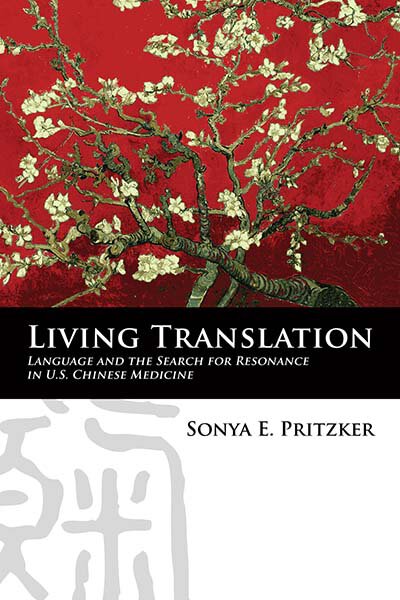Later this month, Sonya Pritzker’s monograph Living Translation: Language and the Search for Resonance in U.S. Chinese Medicine will be published. Within this volume, Pritzker explains that translation is not a static exercise, but is instead a variable and experiential undertaking. Following, the author shares how she became enamored of Chinese culture and discovered the life of language.
____________________________________

I went to China for the first time in 1995. I was 19. The skies in Beijing were blue then, and the remnants of a stark and closed era were everywhere. I look back on the things of that time with nostalgia, the ever-present red thermoses with flowers, cheap rubber shoes, mian bao che or “bread box” cars, flying pigeon bicycles. My passion for China, in particular the Chinese language, had arisen over time.
Throughout high school I had borrowed books upon books from the library, volumes that presented classical Chinese philosophy in English peppered with Chinese words in the old Wade-Giles romanization (think “ch’i” as opposed to “qi,” which is the currently used pinyin form). I had tried to teach myself the language, making long lists of words and linking them to the English.
Before I went to Beijing, in addition to my play with words in high school, I had taken one year of college Chinese. I remember getting off the plane in the old Beijing airport. I didn’t understand a thing. Over the course of a year, though, I made many friends, young Beijingers who had a passion for music and late night debates over cheap beer. Through these relationships, I learned the real rhythm of the language, the melodious flow of communication between people. The sense of humor and the expression of emotion. And through these relationships, my obsession with translation became more clear. I was not so much interested in translating texts, though that was certainly part of it. I was fascinated instead with how people were translated in conversations that stretched over time and place. And how we were all transformed in the process.
Jump ahead to my studies in Chinese medicine, which began in 2000. I was at a small school in San Diego. When I first picked up the textbooks that I was to learn from, I was surprised to find only English with some minimal pinyin terms. I got to work inserting the Chinese characters in all of my books and through that process very soon realized that it was impossible to find the Chinese terms for many of the concepts, as they were translated differently in each text. As frustrating as this sometimes was, it reminded me of my first experiences translating Chinese, and translating myself into Chinese. I knew how hard it was, and how deeply personal. When I later learned of the so-called “terminology debates” taking the field of U.S. Chinese medicine by storm (I describe these in detail in Chapter 2 of the book), I grew increasingly more interested in the process by which different authors fought for their translation choices, by the ways in which students came to identify with certain English terms and explanations over others, and by the authoritative forces of economics and biomedicalization that often dictated the whole endeavor.
And so, after several years of clinical practice and the commencement of my studies in linguistic and medical anthropology at UCLA, it finally dawned on me that the direction my research needed to go was to the heart of translation in Chinese medicine. From the beginning, I knew that I wanted to write an ethnography of translation that, in addition to focusing on texts, was inclusive of the people who were being translated through their engagement with the terms and concepts of Chinese medicine. These people included authors, teachers, students, and even patients. From my current vantage point as a researcher at David Geffen School of Medicine at UCLA, I like to think of what I was trying to get at as the “clinical translation” of Chinese medicine, meaning the pathways through which Chinese medicine went from text to practice in the social, cultural, and personal worlds of the people engaging with the words. The concept of “living translation” (actually named by Linda Garro, my beloved advisor and colleague) arose from the process of conducting this very personal ethnography. It is a concept that I sincerely hope does justice to the complex process of translation in Chinese medicine, and perhaps offers readers in other fields a glimpse into a novel, if not entirely unique, way of approaching translation in any situation.
_______________________________
Sonya Pritzker is an anthropologist in the Department of Medicine, Division of General Internal Medicine & Health Services Research, at the UCLA David Geffen School of Medicine. She is a researcher at the UCLA Center for East West Medicine and research advisor in the doctoral program at Pacific College of Oriental Medicine in San Diego.
